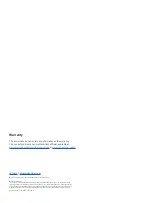
STEP 9
STEP 13
A
B
C
STEP 9
STEP 15
A
B
Fig. 30
13 nO
appears in display. Green LED on reservoir illuminates
(
Fig. 30 A
). In setup procedure, there is an option of selecting low
level detection.If low level detection is not required, push
Δ
and
select
nO
.
14
Press
ENTER
to confirm.
15
For this example, press
Δ
until
YES
appears in display.
16
Press
ENTER
to confirm (
Fig. 30 B
).
17 n-O
(normally open) appears in display. This indicates sensor is
normally open or normally closed. Press
Δ
to choose between
n-O
or
n-C
.
18
Press
ENTER
to confirm choice (
Fig. 30 C
).
NOTE
10-second delay occurs on startup when using low level sensor
to ensure paddle assembly is in correct position.
Sensor activates on low level after 10 seconds. Low level
warning displays when unit reaches pause status.
Fig. 31
19 FE
(fatal error) or
nFE
(nonfatal error) appears in display.
Option
FE
(fatal error) is used to stop pump on low level warning.
Typically used on pumps with reservoir capacities from 0.26 to
2.6 gal
(1 to 10 l)
. It is preferred to stop pump at low level to
maintain layer of grease above pump element area thereby
not allowing air pockets to form around pump element when
filling up reservoir. Option
nFE
(nonfatal error) is recommended
on larger pump reservoirs with substantial distance from pump
tube to bottom of reservoir.
20
Select choice and press
ENTER
(
Fig. 31 A
).
21 L - F
(lamp flashing) displays. This option is used with external
warning lamp. Typically, if monitoring is installed, this function is
used. Press
Δ
and change status from
L - F
(lamp flashing) to
L - S
(lamp static).
L - F
is a pulsed output supply and
L -S
is a
constant output supply.
22
Press
ENTER
with either choice selected to proceed to next part
of programming (
Fig. 31 B
).
18
19

















